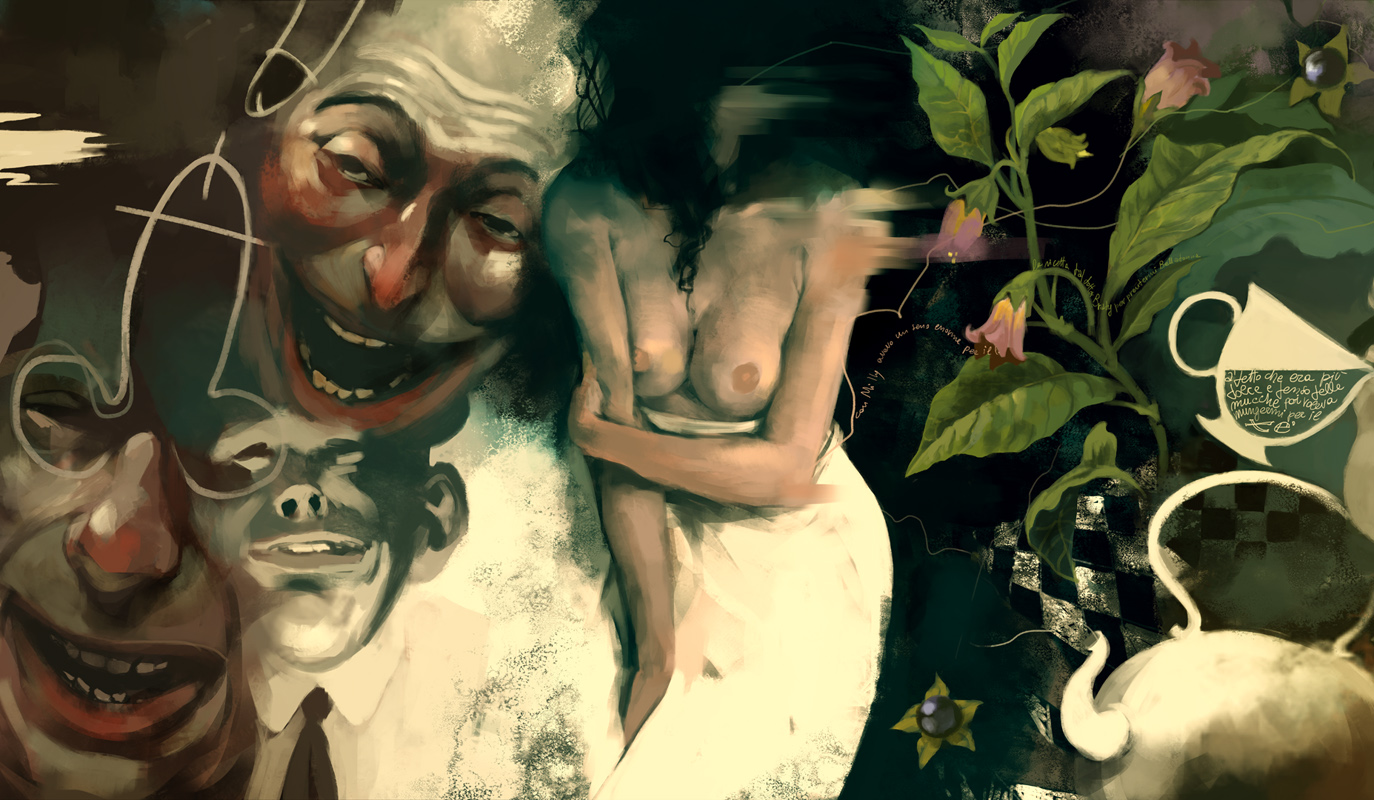(Art by Cosimo Miorelli, for Bloomsday 2015)
Ok, so, this is the third and final Charles Johnson exercise (I must confess, the last three exercises have all been from page 37 of The Way of the Writer, which I finished yesterday).
(3) Write a monologue of at least three pages in which the interruptions–pauses, gestures, descriptions, etc.–all clearly and persuasively characterize, and the shifts from monologue to gesture and touches of setting (as when the character touches some object or glances out the window) all feel rhythmically right. Purpose: to learn the ways of letting a character make a long speech that doesn’t seem boring or artificial.
Click here for a PDF of my character Anabelle Zena Martes’s monolgue.
This exercise was particularly fun, because I had just written an essay for my Odysseys course–lead professor Melissa Monroe–that analyzed Molly Bloom’s famous 36-page, two sentence, interior monologue. Also, as suggested by Johnson, I read Joanna Russ’s essay What Can a Herione Do? wherein she writes about the difficulties and limitations women novelists, like those of their female-protagonists, must overcome. For whatever reason, a lot of the article didn’t sit well with me. I don’t consciously write for other male-minds according to unconscious myths instilled into me as a male, hell, if I could I would write the next nostoi epic that lasts 14 thousand years (Is Homer’s work, so archetypal, so bad, so confining?). Blanket statements about the general public do not apply to me. I write from within. I write for all.
Nevertheless, Russ raises many interesting questions and makes many quotable turns-of-phrase, such as when she grants some novelists write predominately free of limitation, through “lyric” writing, not a male-structure, but an “associative”-construction: “In this sense of ‘lyric’ Virginia Woolf is a lyric novelist–in fact she has been criticized in just those terms, i.e., “nothing happens” in her books. A writer who employs the lyric structure is setting various images, events, scenes, or memories to circling round an unspoken, invisible center. The invisible center is what the novel or poem is about…”
In addition to exercising “rhythmic rightness,” writing around this “invisible” center is the attached monologue’s aim. What do you imagine the center to be? Please leave your comment below. Feel free also to write your own monologue and leave it here in conversation.
Bonus: From the same Johnson exercise: Later, in a second monologue, students present a philosophical positional they tend to favor, but present it through a character and in a context that modifies or undermines it. Feel free to write and share this monologue as well…





I have noticed you don’t monetize your website, don’t waste your traffic, you can earn extra
bucks every month because you’ve got high quality
content. If you want to know how to make extra bucks, search for: best adsense
alternative Wrastain’s tools